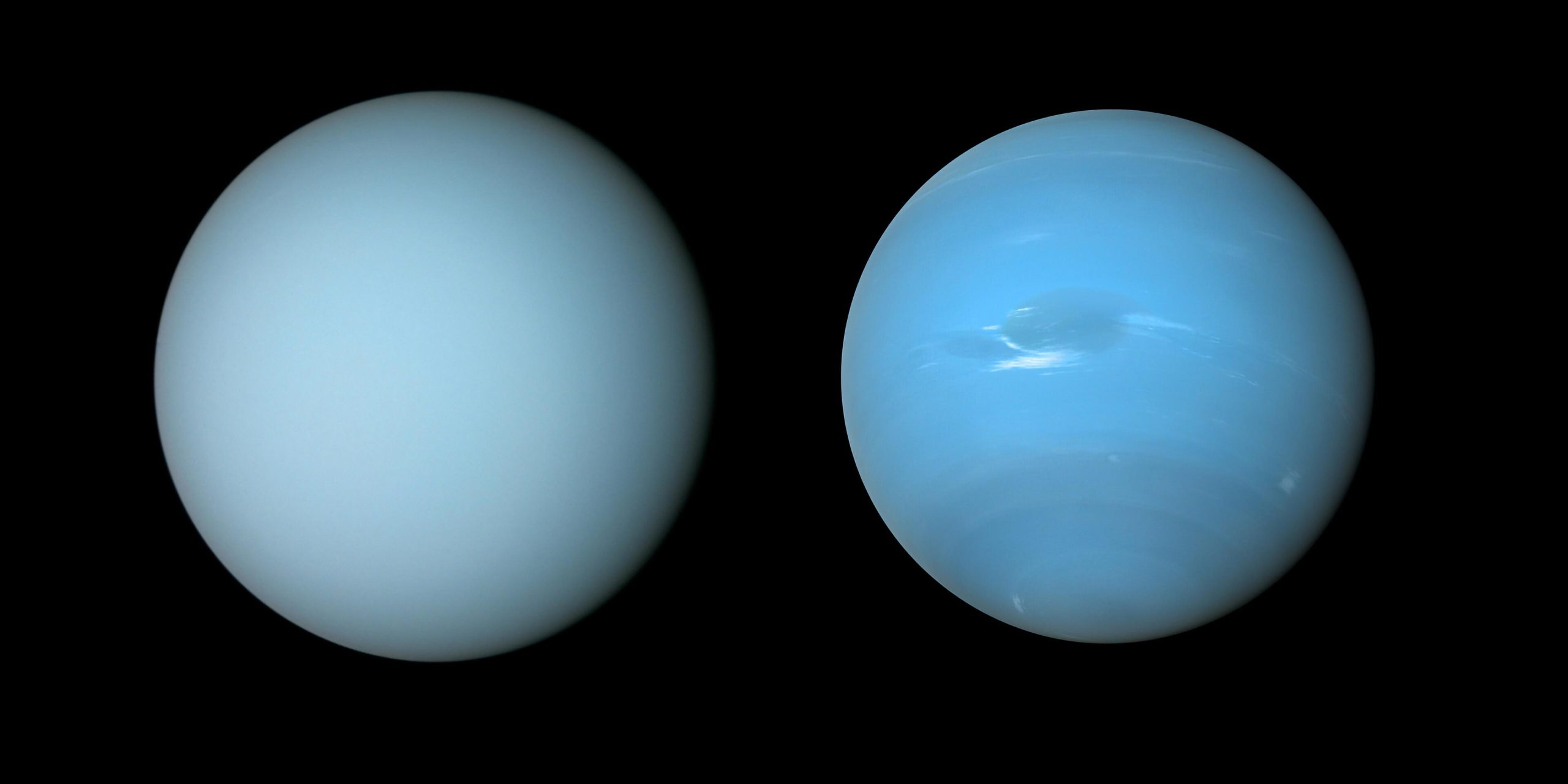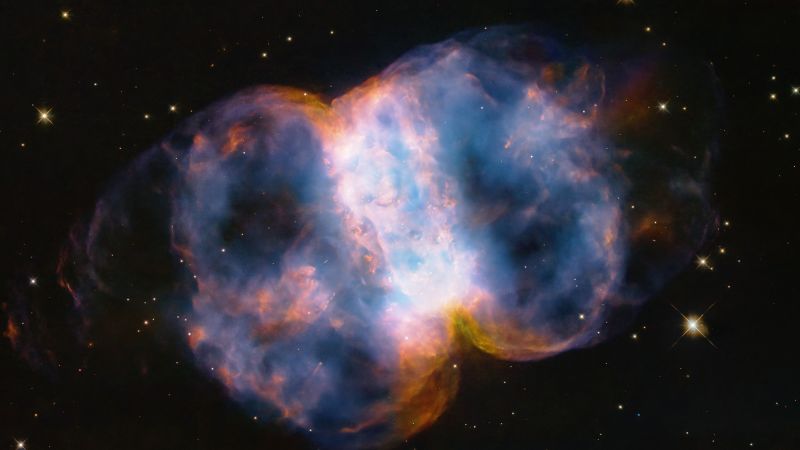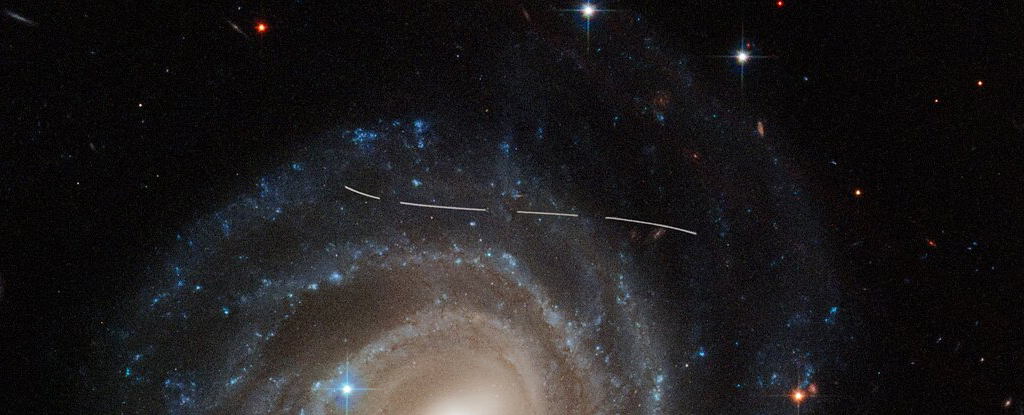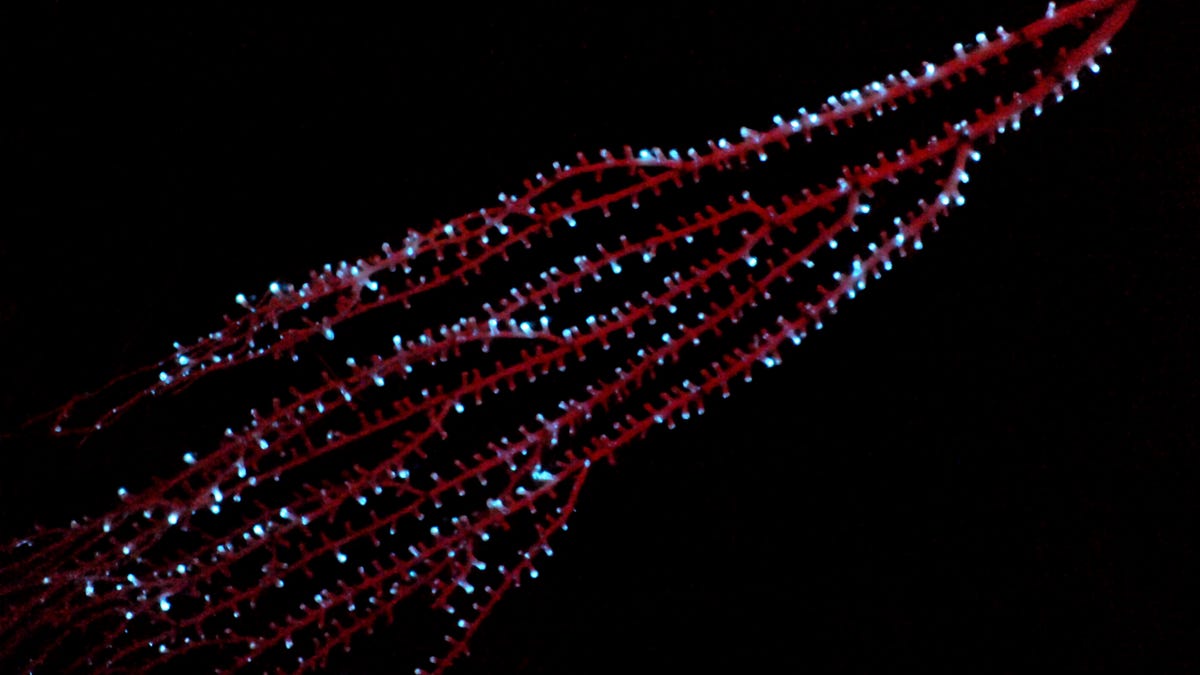
Sonda Voyager 2 NASA zachytila tyto pohledy na Uran (vlevo) a Neptun (vpravo) během planetárních průletů v 80. letech 20. století. Poděkování: NASA/JPL-Caltech/B. Johnson
Pozorování z observatoře Gemini a dalších dalekohledů odhaluje nadměrný zákal[{“ attribute=““>Uranus makes it paler than Neptune.
Astronomers may now understand why the similar planets Uranus and Neptune have distinctive hues. Researchers constructed a single atmospheric model that matches observations of both planets using observations from the Gemini North telescope, the NASA Infrared Telescope Facility, and the Hubble Space Telescope. The model reveals that excess haze on Uranus accumulates in the planet’s stagnant, sluggish atmosphere, giving it a lighter hue than Neptune.
Planety Neptun a Uran mají mnoho společného – mají podobné hmotnosti, velikosti a složení atmosféry – přesto se jejich vzhled výrazně liší. Na viditelných vlnových délkách má Neptun viditelně modřejší barvu, zatímco Uran má světlejší odstín azurové. Astronomové nyní mají vysvětlení, proč se obě planety tak liší barvou.
Nový výzkum ukazuje, že vrstva koncentrovaného oparu nalezená na obou planetách je na Uranu silnější než podobná vrstva na Neptunu a „vybělí“ vzhled Uranu více než na Neptunu.[1] Pokud není mlha atmosféru Z Neptunu a Uranu se oba budou jevit v modré barvě zhruba stejně.[2]
Tento závěr vychází z modelu[3] že mezinárodní tým vedený Patrickem Irwinem, profesorem planetární fyziky na Oxfordské univerzitě, vyvinul k popisu aerosolových vrstev v atmosférách Neptunu a Uranu.[4] Předchozí výzkumy horních atmosfér těchto planet se soustředily na vzhled atmosféry pouze při určitých vlnových délkách. Tento nový model, který se skládá z více vrstev atmosféry, však odpovídá pozorování z obou planet v širokém rozsahu vlnových délek. Nový model také zahrnuje fuzzy částice v hlubších vrstvách, o kterých se dříve předpokládalo, že obsahují pouze oblaka metanu a sirovodíkového ledu.

Tento diagram ukazuje tři vrstvy aerosolů v atmosférách Uranu a Neptunu, jak je navrhl tým vědců pod vedením Patricka Irwina. Výškoměr na grafu představuje tlak nad 10 barů.
Nejhlubší vrstva (aerosolová vrstva-1) je silná a skládá se ze směsi sirovodíkového ledu a částic z interakce planetárních atmosfér se slunečním světlem.
Hlavní vrstvou ovlivňující barvy je střední vrstva, což je vrstva částic mlhy (v papíru označovaná jako aerosolová vrstva-2), která je na Uranu silnější než na Neptunu. Tým má podezření, že na obou planetách metanový led kondenzuje na částicích v této vrstvě a stahuje částice hlouběji do atmosféry, jak padá metanový sníh. Vzhledem k tomu, že atmosféra Neptunu je aktivnější a turbulentnější než atmosféra Uranu, tým věří, že atmosféra Neptunu je efektivnější při přesouvání metanových částic do vrstvy oparu a vytváření tohoto sněhu. To odstraní více zákalu a udržuje Neptunovu zákalovou vrstvu tenčí než na Uranu, což znamená, že Neptunova modř se zdá být silnější.
Nad oběma vrstvami je rozšířená vrstva mlhy (aerosolová vrstva 3) podobná vrstvě pod, ale křehčí. Na Neptunu se také nad touto vrstvou tvoří velké částice metanového ledu.
Poděkování: Gemini International Observatory/NOIRLab/NSF/AURA, J. da Silva/NASA/JPL-Caltech/B. Johnson
„Toto je první model, který synchronně odpovídá pozorování odraženého slunečního světla od ultrafialového po blízké infračervené,“ vysvětlil Irwin, hlavní autor výzkumného článku, který toto zjištění prezentuje v Journal of Geophysical Research: Planets. „Je také prvním, kdo vysvětlil rozdíl ve viditelné barvě mezi Uranem a Neptunem.“
Model týmu se skládá ze tří vrstev aerosolů v různých nadmořských výškách.[5] Hlavní vrstvou ovlivňující barvy je střední vrstva, což je vrstva částic mlhy (v papíru označovaná jako aerosolová vrstva-2), která je silnější přes Uran z Neptune. Tým má podezření, že na obou planetách metanový led kondenzuje na částicích v této vrstvě a stahuje částice hlouběji do atmosféry, jak padá metanový sníh. Vzhledem k tomu, že atmosféra Neptunu je aktivnější a turbulentnější než atmosféra Uranu, tým věří, že atmosféra Neptunu je efektivnější při přesouvání metanových částic do vrstvy oparu a vytváření tohoto sněhu. To odstraní více zákalu a udržuje Neptunovu zákalovou vrstvu tenčí než na Uranu, což znamená, že Neptunova modř se zdá být silnější.
Mike Wong, astronom v[{“ attribute=““>University of California, Berkeley, and a member of the team behind this result. “Explaining the difference in color between Uranus and Neptune was an unexpected bonus!”
To create this model, Irwin’s team analyzed a set of observations of the planets encompassing ultraviolet, visible, and near-infrared wavelengths (from 0.3 to 2.5 micrometers) taken with the Near-Infrared Integral Field Spectrometer (NIFS) on the Gemini North telescope near the summit of Maunakea in Hawai‘i — which is part of the international Gemini Observatory, a Program of NSF’s NOIRLab — as well as archival data from the NASA Infrared Telescope Facility, also located in Hawai‘i, and the NASA/ESA Hubble Space Telescope.
The NIFS instrument on Gemini North was particularly important to this result as it is able to provide spectra — measurements of how bright an object is at different wavelengths — for every point in its field of view. This provided the team with detailed measurements of how reflective both planets’ atmospheres are across both the full disk of the planet and across a range of near-infrared wavelengths.
“The Gemini observatories continue to deliver new insights into the nature of our planetary neighbors,” said Martin Still, Gemini Program Officer at the National Science Foundation. “In this experiment, Gemini North provided a component within a suite of ground- and space-based facilities critical to the detection and characterization of atmospheric hazes.”
The model also helps explain the dark spots that are occasionally visible on Neptune and less commonly detected on Uranus. While astronomers were already aware of the presence of dark spots in the atmospheres of both planets, they didn’t know which aerosol layer was causing these dark spots or why the aerosols at those layers were less reflective. The team’s research sheds light on these questions by showing that a darkening of the deepest layer of their model would produce dark spots similar to those seen on Neptune and perhaps Uranus.
Notes
- This whitening effect is similar to how clouds in exoplanet atmospheres dull or ‘flatten’ features in the spectra of exoplanets.
- The red colors of the sunlight scattered from the haze and air molecules are more absorbed by methane molecules in the atmosphere of the planets. This process — referred to as Rayleigh scattering — is what makes skies blue here on Earth (though in Earth’s atmosphere sunlight is mostly scattered by nitrogen molecules rather than hydrogen molecules). Rayleigh scattering occurs predominantly at shorter, bluer wavelengths.
- An aerosol is a suspension of fine droplets or particles in a gas. Common examples on Earth include mist, soot, smoke, and fog. On Neptune and Uranus, particles produced by sunlight interacting with elements in the atmosphere (photochemical reactions) are responsible for aerosol hazes in these planets’ atmospheres.
- A scientific model is a computational tool used by scientists to test predictions about a phenomena that would be impossible to do in the real world.
- The deepest layer (referred to in the paper as the Aerosol-1 layer) is thick and is composed of a mixture of hydrogen sulfide ice and particles produced by the interaction of the planets’ atmospheres with sunlight. The top layer is an extended layer of haze (the Aerosol-3 layer) similar to the middle layer but more tenuous. On Neptune, large methane ice particles also form above this layer.
More information
This research was presented in the paper “Hazy blue worlds: A holistic aerosol model for Uranus and Neptune, including Dark Spots” to appear in the Journal of Geophysical Research: Planets.
The team is composed of P.G.J. Irwin (Department of Physics, University of Oxford, UK), N.A. Teanby (School of Earth Sciences, University of Bristol, UK), L.N. Fletcher (School of Physics & Astronomy, University of Leicester, UK), D. Toledo (Instituto Nacional de Tecnica Aeroespacial, Spain), G.S. Orton (Jet Propulsion Laboratory, California Institute of Technology, USA), M.H. Wong (Center for Integrative Planetary Science, University of California, Berkeley, USA), M.T. Roman (School of Physics & Astronomy, University of Leicester, UK), S. Perez-Hoyos (University of the Basque Country, Spain), A. James (Department of Physics, University of Oxford, UK), J. Dobinson (Department of Physics, University of Oxford, UK).
NSF’s NOIRLab (National Optical-Infrared Astronomy Research Laboratory), the US center for ground-based optical-infrared astronomy, operates the international Gemini Observatory (a facility of NSF, NRC–Canada, ANID–Chile, MCTIC–Brazil, MINCyT–Argentina, and KASI–Republic of Korea), Kitt Peak National Observatory (KPNO), Cerro Tololo Inter-American Observatory (CTIO), the Community Science and Data Center (CSDC), and Vera C. Rubin Observatory (operated in cooperation with the Department of Energy’s SLAC National Accelerator Laboratory). It is managed by the Association of Universities for Research in Astronomy (AURA) under a cooperative agreement with NSF and is headquartered in Tucson, Arizona. The astronomical community is honored to have the opportunity to conduct astronomical research on Iolkam Du’ag (Kitt Peak) in Arizona, on Maunakea in Hawai‘i, and on Cerro Tololo and Cerro Pachón in Chile. We recognize and acknowledge the very significant cultural role and reverence that these sites have for the Tohono O’odham Nation, the Native Hawaiian community, and the local communities in Chile, respectively.

„Hudební učenec. Spisovatel. Zlý slanina evangelista. Hrdý twitter narkoman. Myslitel. Milovník internetu. Jemně okouzlující hráč.“





